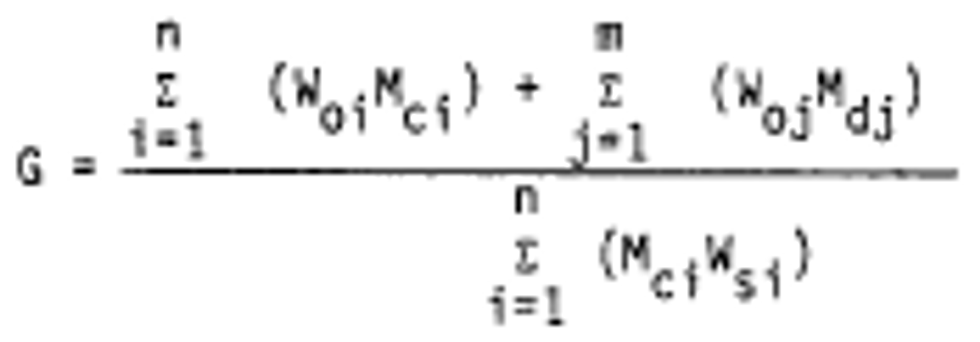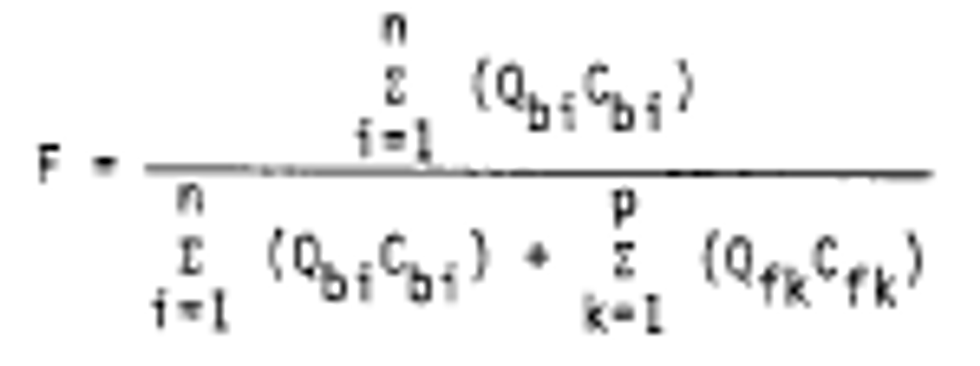['Air Programs']
['Air Quality']
11/20/2023
...
�60.580 Applicability and designation of affected facility.
(a) The affected facility to which the provisions of this subpart apply is each rotogravure printing line used to print or coat flexible vinyl or urethane products.
(b) This subpart applies to any affected facility which begins construction, modification, or reconstruction after January 18, 1983.
(c) For facilities controlled by a solvent recovery emission control device, the provisions of �60.584(a) requiring monitoring of operations will not apply until EPA has promulgated performance specifications under appendix B for the continuous monitoring system. After the promulgation of performance specifications, these provisions will apply to each affected facility under paragraph (b) of this section. Facilities controlled by a solvent recovery emission control device that become subject to the standard prior to promulgation of performance specifications must conduct performance tests in accordance with �60.13(b) after performance specifications are promulgated.
�60.581 Definitions and symbols.
(a) All terms used in this subpart, not defined below, are given the same meaning as in the Act or in subpart A of this part.
Emission control device means any solvent recovery or solvent destruction device used to control volatile organic compounds (VOC) emissions from flexible vinyl and urethane rotogravure printing lines.
Emission control system means the combination of an emission control device and a vapor capture system for the purpose of reducing VOC emissions from flexible vinyl and urethane rotogravure printing lines.
Flexible vinyl and urethane products mean those products, except for resilient floor coverings (1977 Standard Industry Code 3996) and flexible packaging, that are more than 50 micrometers (0.002 inches) thick, and that consist of or contain a vinyl or urethane sheet or a vinyl or urethane coated web.
Gravure cylinder means a plated cylinder with a printing image consisting of minute cells or indentations, specifically engraved or etched into the cylinder's surface to hold ink when continuously revolved through a fountain of ink.
Ink means any mixture of ink, coating solids, organic solvents including dilution solvent, and water that is applied to the web of flexible vinyl or urethane on a rotogravure printing line.
Ink solids means the solids content of an ink as determined by Method 24, ink manufacturer's formulation data, or plant blending records.
Inventory system means a method of physically accounting for the quantity of ink, solvent, and solids used at one or more affected facilities during a time period. The system is based on plant purchase or inventory records.
Plant blending records means those records which document the weight fraction of organic solvents and solids used in the formulation or preparation of inks at the vinyl or urethane printing plant where they are used.
Rotogravure print station means any device designed to print or coat inks on one side of a continuous web or substrate using the intaglio printing process with a gravure cylinder.
Rotogravure printing line means any number of rotogravure print stations and associated dryers capable of printing or coating simultaneously on the same continuous vinyl or urethane web or substrate, which is fed from a continuous roll.
Vapor capture system means any device or combination of devices designed to contain, collect, and route organic solvent vapors emitted from the flexible vinyl or urethane rotogravure printing line.
(b) All symbols used in this subpart not defined below are given the same meaning as in the Act or in subpart A of this part.
a = the gas stream vents exiting the emission control device.
bthe gas stream vents entering the emission control device.
fthe gas stream vents which are not directed to an emission control device.
Caj = the concentration of VOC in each gas stream (j) for the time period exiting the emission control device, in parts per million by volume.
Cbi = the concentration of VOC in each gas stream (i) for the time period entering the emission control device, in parts per million by volume.
Cfk = the concentration of VOC in each gas stream (k) for the time period which is not directed to an emission control device, in parts per million by volume.
Gthe weighted average mass of VOC per mass of ink solids applied, in kilograms per kilogram.
Mci = the total mass of each ink (i) applied in the time period as determined from plant records, in kilograms.
Mdj = the total mass of each dilution solvent (j) added at the print line in the time period determined from plant records, in kilograms.
Qaj = the volumetric flow rate of each effluent gas stream (j) exiting the emission control device, in standard cubic meters per hour.
Qbi = the volumetric flow rate of each effluent gas stream (i) entering the emission control device, in standard cubic meters per hour.
Qfk = the volumetric flow rate of each effluent gas stream (k) not directed to an emission control device, in standard cubic meters per hour.
Ethe VOC emission reduction efficiency (as a fraction) of the emission control device during performance testing.
Fthe VOC emission capture efficiency (as a fraction) of the vapor capture system during performance testing.
Woi = the weight fraction of VOC in each ink (i) used in the time period as determined from Method 24, manufacturer's formulation data, or plant blending records, in kilograms per kilogram.
Wsi�means the weight fraction of solids in each ink (i) used in the time period as determined from Method 24, manufacturer's formulation data, or plant blending records, in kilograms per kilogram.
Woj = the weight fraction of VOC in each dilution solvent (j) added at the print line in the time period determined from Method 24, manufacturer's formulation data, or plant blending records, in kilograms per kilogram.
[49 FR 26892, June 29, 1984; 49 FR 32848, Aug. 17, 1984, as amended at 65 FR 61768, Oct. 17, 2000]
�60.582 Standard for volatile organic compounds.
(a) On and after the date on which the performance test required by �60.8 has been completed, each owner or operator subject to this subpart shall either:
(1) Use inks with a weighted average VOC content less than 1.0 kilogram VOC per kilogram ink solids at each affected facility, or
(2) Reduce VOC emissions to the atmosphere by 85 percent from each affected facility.
(b) [Reserved]
�60.583 Test methods and procedures.
(a) Methods in appendix A of this part, except as provided under �60.8(b), shall be used to determine compliance with �60.582(a) as follows:
(1) Method 24 for analysis of inks. If nonphotochemically reactive solvents are used in the inks, standard gas chromatographic techniques may be used to identify and quantify these solvents. The results of Method 24 may be adjusted to subtract these solvents from the measured VOC content.
(2) Method 25A for VOC concentration (the calibration gas shall be propane);
(3) Method 1 for sample and velocity traverses;
(4) Method 2 for velocity and volumetric flow rates;
(5) Method 3 for gas analysis;
(6) Method 4 for stack gas moisture.
(b) To demonstrate compliance with �60.582(a)(1), the owner or operator of an affected facility shall determine the weighted average VOC content of the inks according to the following procedures:
(1) Determine and record the VOC content and amount of each ink used at the print head, including the VOC content and amount of diluent solvent, for any time periods when VOC emission control equipment is not used.
(2) Compute the weighted average VOC content by the following equation:

(3) The weighted average VOC content of the inks shall be calculated over a period that does not exceed one calendar month, or four consecutive weeks. A facility that uses an accounting system based on quarters consisting of two 28 calendar day periods and one 35 calendar day period may use an averaging period of 35 calendar days four times per year, provided the use of such an accounting system is documented in the initial performance test.
(4) Each determination of the weighted average VOC content shall constitute a performance test for any period when VOC emission control equipment is not used. Results of the initial performance test must be reported to the Administrator. Method 24 or ink manufacturers' formulation data along with plant blending records (if plant blending is done) may be used to determine VOC content. The Administrator may require the use of Method 24 if there is a question concerning the accuracy of the ink manufacturer's data or plant blending records.
(5) If, during the time periods when emission control equipment is not used, all inks used contain less than 1.0 kilogram VOC per kilogram ink solids, the owner or operator is not required to calculate the weighted average VOC content, but must verify and record the VOC content of each ink (including any added dilution solvent) used as determined by Method 24, ink manufacturers' formulation data, or plant blending records.
(c) To demonstrate compliance with �60.582(a)(1), the owner or operator may determine the weighted average VOC content using an inventory system.
(1) The inventory system shall accurately account to the nearest kilogram for the VOC content of all inks and dilution solvent used, recycled, and discarded for each affected facility during the averaging period. Separate records must be kept for each affected facility.
(2) To determine VOC content of inks and dilution solvent used or recycled, Method 24 or ink manufacturers' formulation data must be used in combination with plant blending records (if plant blending is done) or inventory records or purchase records for new inks or dilution solvent.
(3) For inks to be discarded, only Method 24 shall be used to determine the VOC content. Inks to be discarded may be combined prior to measurement of volume or weight and testing by Method 24.
(4) The Administrator may require the use of Method 24 if there is a question concerning the accuracy of the ink manufacturer's data or plant records.
(5) The Administrator shall approve the inventory system of accounting for VOC content prior to the initial performance test.
(d) To demonstrate compliance with �60.582(a)(2), the owner or operator of an affected facility controlled by a solvent recovery emission control device or an incineration control device shall conduct a performance test to determine overall VOC emission control efficiency according to the following procedures:
(1) The performance test shall consist of three runs. Each test run must last a minimum of 30 minutes and shall continue until the printing operation is interrupted or until 180 minutes of continuous operation occurs. During each test run, the print line shall be printing continuously and operating normally. The VOC emission reduction efficiency achieved for each test run is averaged over the entire test run period.
(2) VOC concentration values at each site shall be measured simultaneously.
(3) The volumetric flow rate shall be determined from one Method 2 measurement for each test run conducted immediately prior to, during, or after that test run. Volumetric flow rates at each site do not need to be measured simultaneously.
(4) In order to determine capture efficiency from an affected facility, all fugitive VOC emissions from the affected facility shall be captured and vented through stacks suitable for measurement. During a performance test, the owner or operator of an affected facility located in an area with other sources of VOC shall isolate the affected facility from other sources of VOC. These two requirements shall be accomplished using one of the following methods:
(i) Build a permanent enclosure around the affected facility;
(ii) Build a temporary enclosure around the affected facility and duplicate, to an extent that is reasonably feasible, the ventilation conditions that are in effect when the affected facility is not enclosed (one way to do this is to divide the room exhaust rate by the volume of the room and then duplicate that quotient or 20 air changes per hour, whichever is smaller, in the temporary enclosure); or
(iii) Shut down all other sources of VOC and continue to exhaust fugitive emissions from the affected facility through any building ventilation system and other room exhausts such as print line ovens and embossers.
(5) For each affected facility, compliance with �60.582(a)(2) has been demonstrated if the average value of the overall control efficiency (EF) for the three runs is equal to or greater than 85 percent. An overall control efficiency is calculated for each run as follows:
(i) For efficiency of the emission control device,

(ii) For efficiency of the vapor capture system,

[49 FR 26892, June 29, 1984; 49 FR 32848, Aug. 17, 1984, as amended at 65 FR 61768, Oct. 17, 2000]
�60.584 Monitoring of operations and recordkeeping requirements.
(a) The owner or operator of an affected facility controlled by a solvent recovery emission control device shall install, calibrate, operate, and maintain a monitoring system which continuously measures and records the VOC concentration of the exhaust vent stream from the control device and shall comply with the following requirements:
(1) The continuous monitoring system shall be installed in a location that is representative of the VOC concentration in the exhaust vent, at least two equivalent stack diameters from the exhaust point, and protected from interferences due to wind, weather, or other processes.
(2) During the performance test, the owner or operator shall determine and record the average exhaust vent VOC concentration in parts per million by volume. After the performance test, the owner or operator shall determine and, in addition to the record made by the continuous monitoring device, record the average exhaust vent VOC concentration for each 3-hour clock period of printing operation when the average concentration is greater than 50 ppm and more than 20 percent greater than the average concentration value demonstrated during the most recent performance test.
(b) The owner or operator of an affected facility controlled by a thermal incineration emission control device shall install, calibrate, operate, and maintain a monitoring device that continuously measures and records the temperature of the control device exhaust gases and shall comply with the following requirements:
(1) The continuous monitoring device shall be calibrated annually and have an accuracy of �0.75 percent of the temperature being measured, expressed in degrees Celsius, or �2.5�C, whichever is greater.
(2) During the performance test, the owner or operator shall determine and record the average temperature of the control device exhaust gases. After the performance test, the owner or operator shall determine and record, in addition to the record made by the continuous monitoring device, the average temperature for each 3-hour clock period of printing operation when the average temperature of the exhaust gases is more than 28�C (50�F) below the average temperature demonstrated during the most recent performance test.
(c) The owner or operator of an affected facility controlled by a catalytic incineration emission control device shall install, calibrate, operate, and maintain monitoring devices that continuously measure and record the gas temperatures both upstream and downstream of the catalyst bed and shall comply with the following requirements:
(1) Each continuous monitoring device shall be calibrated annually and have an accuracy of �0.75 percent of the temperature being measured, expressed in degrees Celsius, or �2.5�C, whichever is greater.
(2) During the performance test, the owner or operator shall determine and record the average gas temperature both upstream and downstream of the catalyst bed. After the performance test, the owner or operator shall determine and record, in addition to the record made by the continuous monitoring device, the average temperatures for each 3-hour clock period of printing operation when the average temperature of the gas stream before the catalyst bed is more than 28�C below the average temperature demonstrated during the most recent performance test or the average temperature difference across the catalyst bed is less than 80 percent of the average temperature difference of the device during the most recent performance test.
(d) The owner or operator of an affected facility shall record time periods of operation when an emission control device is not in use.
[49 FR 26892, June 29, 1984, as amended at 65 FR 61768, Oct. 17, 2000]
�60.585 Reporting requirements.
(a) For all affected facilities subject to compliance with �60.582, the performance test data and results from the performance test shall be submitted to the Administrator as specified in �60.8(a).
(b) The owner or operator of each affected facility shall submit semiannual reports to the Administrator of occurrences of the following:
(1) Exceedances of the weighted average VOC content specified in �60.582(a)(1);
(2) Exceedances of the average value of the exhaust vent VOC concentration as defined under �60.584(a)(2);
(3) Drops in the incinerator temperature as defined under �60.584(b)(2); and
(4) Drops in the average temperature of the gas stream immediately before the catalyst bed or drops in the average temperature across the catalyst bed as defined under �60.584(c)(2).
(c) The reports required under paragraph (b) shall be postmarked within 30 days following the end of the second and fourth calendar quarters.
(d) The requirements of this subsection remain in force until and unless the Agency, in delegating enforcement authority to a State under section 111(c) of the Act, approves reporting requirements or an alternative means of compliance surveillance adopted by such States. In thatevent, affected sources within the State will be relieved of the obligation to comply with this subsection, provided that they comply with requirements established by the State.
['Air Programs']
['Air Quality']
UPGRADE TO CONTINUE READING
Load More
J. J. Keller is the trusted source for DOT / Transportation, OSHA / Workplace Safety, Human Resources, Construction Safety and Hazmat / Hazardous Materials regulation compliance products and services. J. J. Keller helps you increase safety awareness, reduce risk, follow best practices, improve safety training, and stay current with changing regulations.
Copyright 2025 J. J. Keller & Associate, Inc. For re-use options please contact copyright@jjkeller.com or call 800-558-5011.
